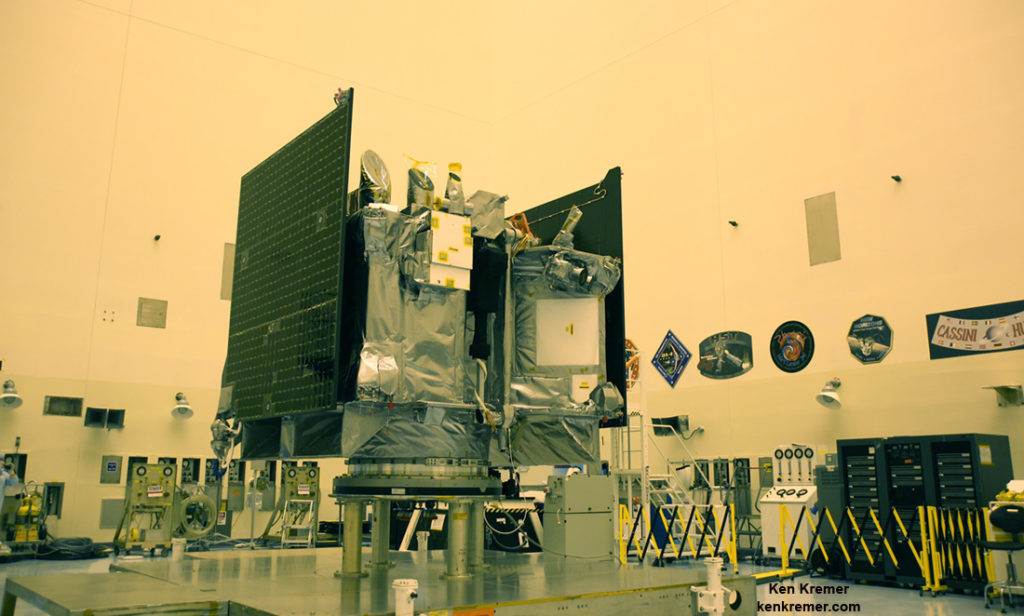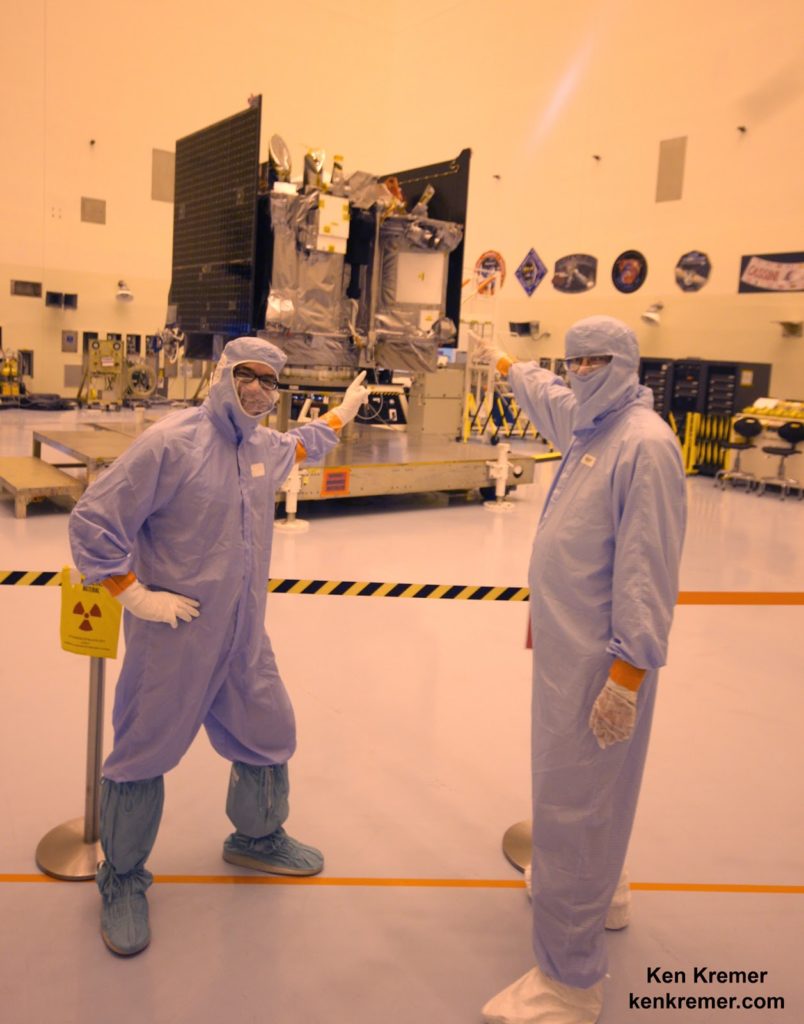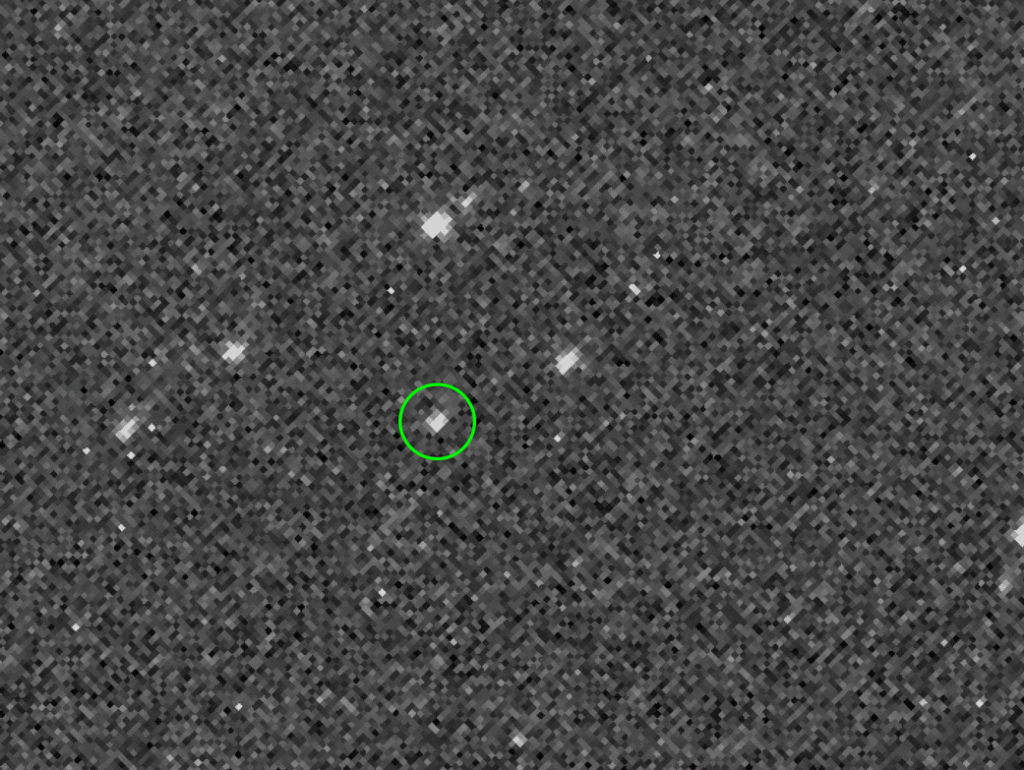CAPE CANAVERAL, FL – Nearly two
years after blasting off from Florida’s NASA’s OSIRIS-Rex
asteroid sampling spacecraft recently captured
its first glimpse of target asteroid Bennu last week and began the final
approach toward its target.
On Aug. 17, the spacecraft’s PolyCam camera
obtained the images of Bennu from a distance of 1.4 million miles
(2.2 million km) – almost six times the distance between the Earth and
Moon.
See the GIF above which was created from 5
images taken by PolyCam camera over an hour.
Bennu is visible as a moving object with the
stars in the constellation Serpens as background.
OSIRIS-Rex, which stands for the Origins, Spectral Interpretation, Resource
Identification, Security-Regolith Explorer, has journeyed approximately 1.1
billion miles (1.8 billion km) since its Sept. 8, 2016, launch on a United
Launch Alliance Atlas V rocket.
OSIRIS-Rex counts as NASA’s first
mission to visit a near-Earth asteroid, survey the surface, collect a sample
and deliver it safely back to Earth.
It is scheduled to arrive at Bennu in about
three months on Dec. 3, 2018.
“Now that OSIRIS-REx is close enough to observe
Bennu, the mission team will spend the next few months learning as much as
possible about Bennu’s size, shape, surface features, and surroundings before
the spacecraft arrives at the asteroid,” said Dante Lauretta, OSIRIS-REx
principal investigator at the University of Arizona, Tucson, in a statement.
After spending so long planning for this
moment, I can’t wait to see what Bennu reveals to us.”
calibration purposes and in order to assist the mission’s navigation team with
optical navigation efforts,” says NASA.
Thus begins the probes asteroid operations phase
which will include snatching samples of the asteroid for eventual return to
Earth via a Sample Return Capsule in Sept. 2023.
 |
|
OSIRIS-Rex
spacecraft in KSC cleanroom prior to launch. Credit: Ken Kremer/kenkremer.com/spaceupclose.com |
OSIRIS-Rex science payload is comprised of is equipped with a trio of
science instruments as well as a sampling arm: the OCAMS camera suite (PolyCam, MapCam, and SamCam), the OTES
thermal spectrometer, the OVIRS visible and infrared spectrometer, the OLA
laser altimeter, and the REXIS x-ray spectrometer.
will:
· regularly observe the area around the asteroid to search for dust plumes and natural satellites, and study Bennu’s light and spectral properties;
· execute a series of four asteroid approach maneuvers, beginning on Oct. 1, slowing the spacecraft to match Bennu’s orbit around the Sun;
· jettison the protective cover of the spacecraft’s sampling arm in mid-October and subsequently extend and image the arm for the first time in flight; and
· use OCAMS to reveal the asteroid’s overall shape in late-October and begin detecting Bennu’s surface features in mid-November.
After arrival at Bennu, the spacecraft will
spend the first month performing flybys of Bennu’s north pole, equator and
south pole, at distances ranging between 11.8 and 4.4 miles (19 and 7 km) from
the asteroid. These maneuvers will allow for the first direct measurement of
Bennu’s mass as well as close-up observations of the surface. These
trajectories will also provide the mission’s navigation team with experience
navigating near the asteroid.
“Bennu’s low gravity provides a unique challenge
for the mission,” said Rich Burns, OSIRIS-REx project manager at NASA’s
Goddard Space Flight Center in Greenbelt, Maryland. “At roughly 0.3 miles
[500 meters] in diameter, Bennu will be the smallest object that any spacecraft
has ever orbited.”
asteroid before the mission team identifies two possible sample sites. Close
examination of these sites will allow the team to pick one for sample
collection, scheduled for early July 2020. After sample collection, the
spacecraft will head back toward Earth before ejecting the Sample Return
Capsule for landing in the Utah desert in Sept. 2023.
 |
Watch for Ken’s continuing onsite coverage of NASA, SpaceX, ULA,
Boeing, Lockheed Martin, Orbital ATK and more space and mission reports direct
from the Kennedy Space Center, Cape Canaveral Air Force Station, Florida and
Wallops Flight Facility, Virginia.
Stay tuned here for Ken’s continuing Earth and Planetary science and human
spaceflight news: www.kenkremer.com
–www.spaceupclose.com – twitter @ken_kremer – email: ken at kenkremer.com


